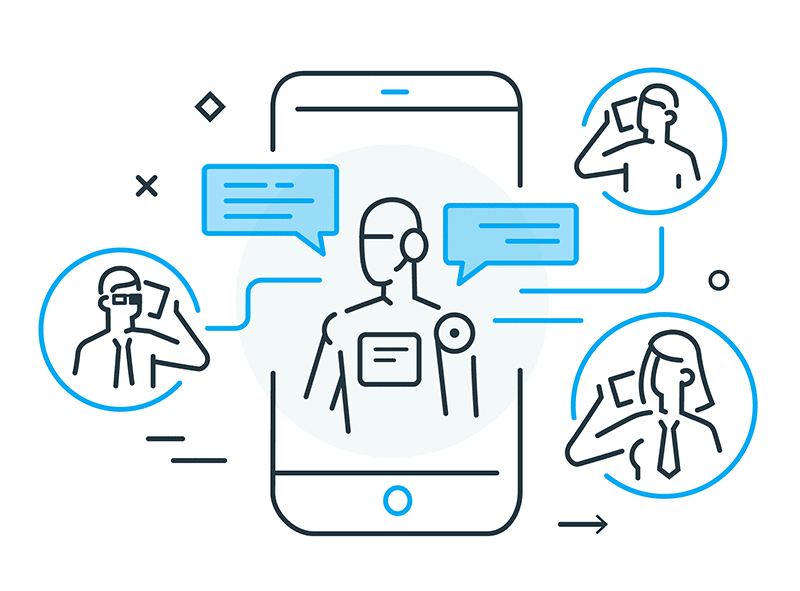ChatGPT has revolutionized conversational AI. OpenAI’s ChatGPT language model improves chatbot and virtual assistant interactions. ChatGPT’s outstanding natural language processing allows developers to create dynamic and responsive conversational experiences. Now we will examine how ChatGPT has evolved and helps developers construct conversational AI.

Table Of Contents 👉
ChatGPT Conversational AI and Future Virtual Helpers
ChatGPT arose from OpenAI’s unwavering quest for more powerful and capable language models. ChatGPT was developed to engage in human-like conversations and provide valuable assistance across multiple disciplines, building on the success of previous models such as GPT-3. Its publication was a watershed moment in the world of artificial intelligence, sparking enthusiasm and curiosity among developers all around the world.
ChatGPT provides developers with a robust toolkit for creating virtual assistants and chatbots that can accurately interpret and react to human queries. Developers can use ChatGPT’s tremendous pre-trained knowledge to give users relevant and contextually suitable responses by tapping into the underlying transformer-based architecture. This capacity has changed how we engage with technology, allowing for more intuitive and conversational interfaces.
👉 Learn More About Integrating GPT Chat Into Your Website Or App: https://wesoftyou.com/services/chatgpt-api-integration-services-and-app-development/
Breaking Down Linguistic Barriers
Overcoming language limitations is one of the most significant issues in conversational AI. ChatGPT has made remarkable progress in this area thanks to its multilingual capabilities. Developers can now design chatbots that support different languages, allowing people from all walks of life to interact easily. It improves not only accessibility but also global connectivity and inclusivity.
Conversational AI is no longer limited to text-based interactions. ChatGPT has cleared the road for multimodal experiences by combining speech and visual inputs. Developers may now design chatbots that understand and respond to verbal orders and analyze visual cues, enabling new applications such as virtual shopping assistants or image-based information retrieval. Integrating several modalities improves the overall user experience and makes chatbot interactions more immersive and natural.

Personalization and Contextual Awareness
ChatGPT‘s capacity to recognize and provide contextually suitable responses has considerably increased. Developers can train ChatGPT to adapt to unique user demands, preferences, and conversational styles by fine-tuning and customizing it. Chatbots can deliver personalized recommendations, suggestions, and solutions due to this personalization, resulting in a more engaging and user-centric experience.
Thanks to fine-tuning and customization methods, developers may now fully customize ChatGPT’s conversational experiences. This method has transformed chatbots from information providers to trusted companions that can understand and solve each user’s needs and preferences. As developers refine and improve ChatGPT’s personalization features, we’ll seamlessly integrate them into our everyday routines and benefit from unique solutions and experiences.
Natural Language Understanding and Generation Advances
OpenAI continues to invest in research and development to improve Chat GPT capabilities. Continuous enhancements ensure that ChatGPT remains at the forefront of conversational AI, from refining its grasp of the sophisticated language to increasing response creation. As developers investigate the potential of ChatGPT, they drive additional innovation and push the boundaries of what is possible in the world of virtual assistants and chatbots.
Aside from language understanding, OpenAI is working to improve ChatGPT response generation. The model’s capacity to provide contextually relevant and coherent responses is critical for enabling meaningful and engaging discussions. The research conducted by OpenAI intends to improve ChatGPT response creation, making it more fluid, concise, and aligned with human-like communication.
Conclusion
ChatGPT has emerged as a game-changer in conversational AI, enabling developers to construct dynamic and responsive virtual assistants that improve user experiences across multiple areas. ChatGPT has set a new benchmark for conversational AI with its ability to recognize many languages, integrate multimodal inputs, and personalize interactions. As we continue to see its progress and developer breakthroughs, it is evident that ChatGPT is defining the future of how we connect with technology by blurring the borders between human and machine communication.
Related Stories:
